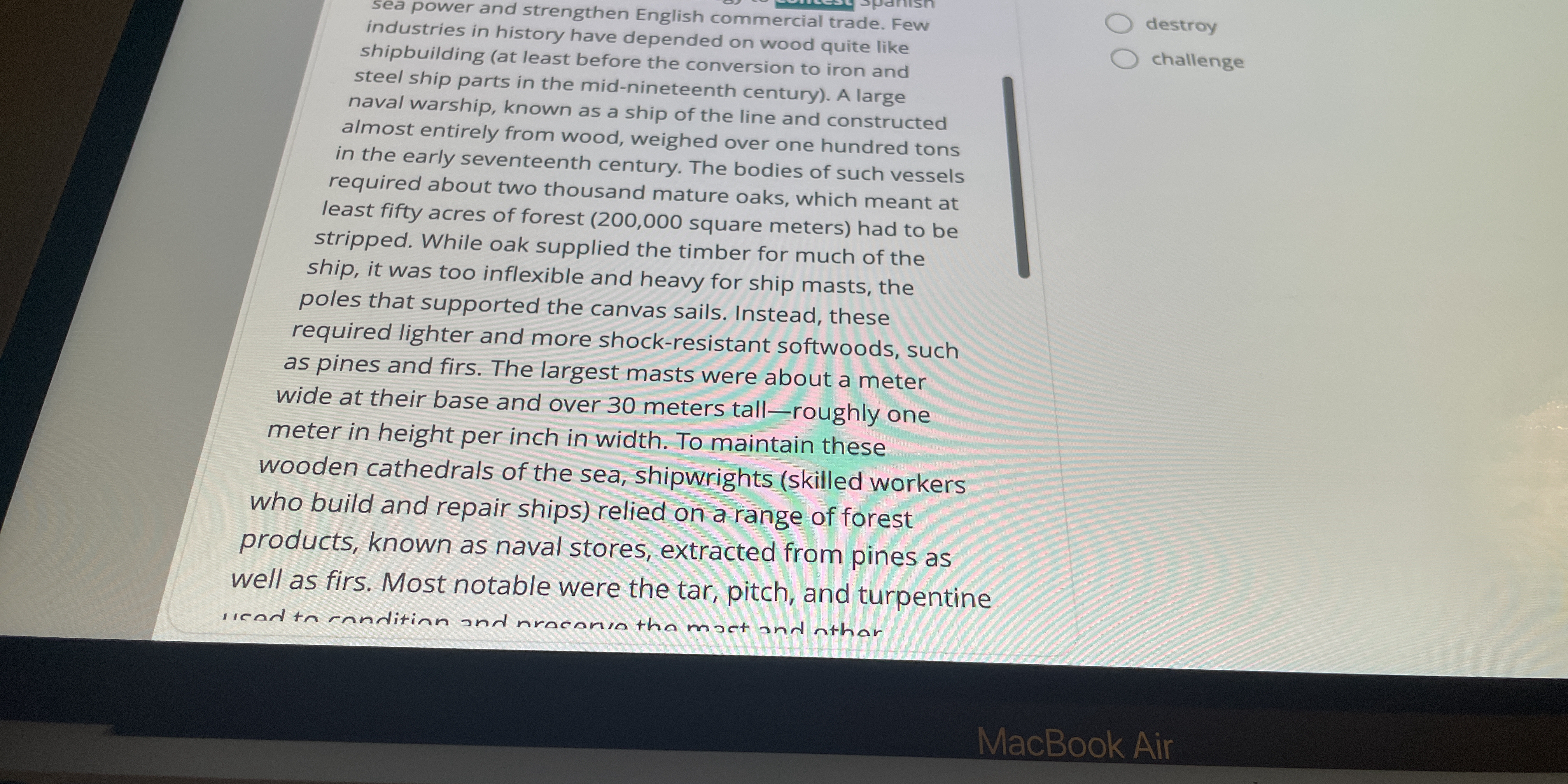
Understand the Problem
The text appears to be discussing the materials and construction methods used in shipbuilding, particularly focusing on the types of wood that were used and the roles of shipwrights.
Answer
Transcription provided from the image.
The transcription of the text in the image is:
"Few industries in history have depended on wood quite like shipbuilding (at least before the conversion to iron and steel ship parts in the mid-nineteenth century). A large naval warship, known as a ship of the line and constructed almost entirely from wood, weighed over one hundred tons in the early seventeenth century. The bodies of such vessels required about two thousand mature oaks, which meant at least fifty acres of forest (200,000 square meters) had to be stripped. While oak supplied the timber for much of the ship, it was too inflexible and heavy for ship masts, the poles that supported the canvas sails. Instead, these required lighter and more shock-resistant softwoods, such as pines and firs. The largest masts were about a meter wide at their base and over 30 meters tall—roughly one meter in height per inch in width. To maintain these wooden cathedrals of the sea, shipwrights (skilled workers who build and repair ships) relied on a range of forest products, known as naval stores, extracted from pines as well as firs. Most notable were the tar, pitch, and turpentine used to condition and preserve the mast and other."
Answer for screen readers
The transcription of the text in the image is:
"Few industries in history have depended on wood quite like shipbuilding (at least before the conversion to iron and steel ship parts in the mid-nineteenth century). A large naval warship, known as a ship of the line and constructed almost entirely from wood, weighed over one hundred tons in the early seventeenth century. The bodies of such vessels required about two thousand mature oaks, which meant at least fifty acres of forest (200,000 square meters) had to be stripped. While oak supplied the timber for much of the ship, it was too inflexible and heavy for ship masts, the poles that supported the canvas sails. Instead, these required lighter and more shock-resistant softwoods, such as pines and firs. The largest masts were about a meter wide at their base and over 30 meters tall—roughly one meter in height per inch in width. To maintain these wooden cathedrals of the sea, shipwrights (skilled workers who build and repair ships) relied on a range of forest products, known as naval stores, extracted from pines as well as firs. Most notable were the tar, pitch, and turpentine used to condition and preserve the mast and other."
AI-generated content may contain errors. Please verify critical information